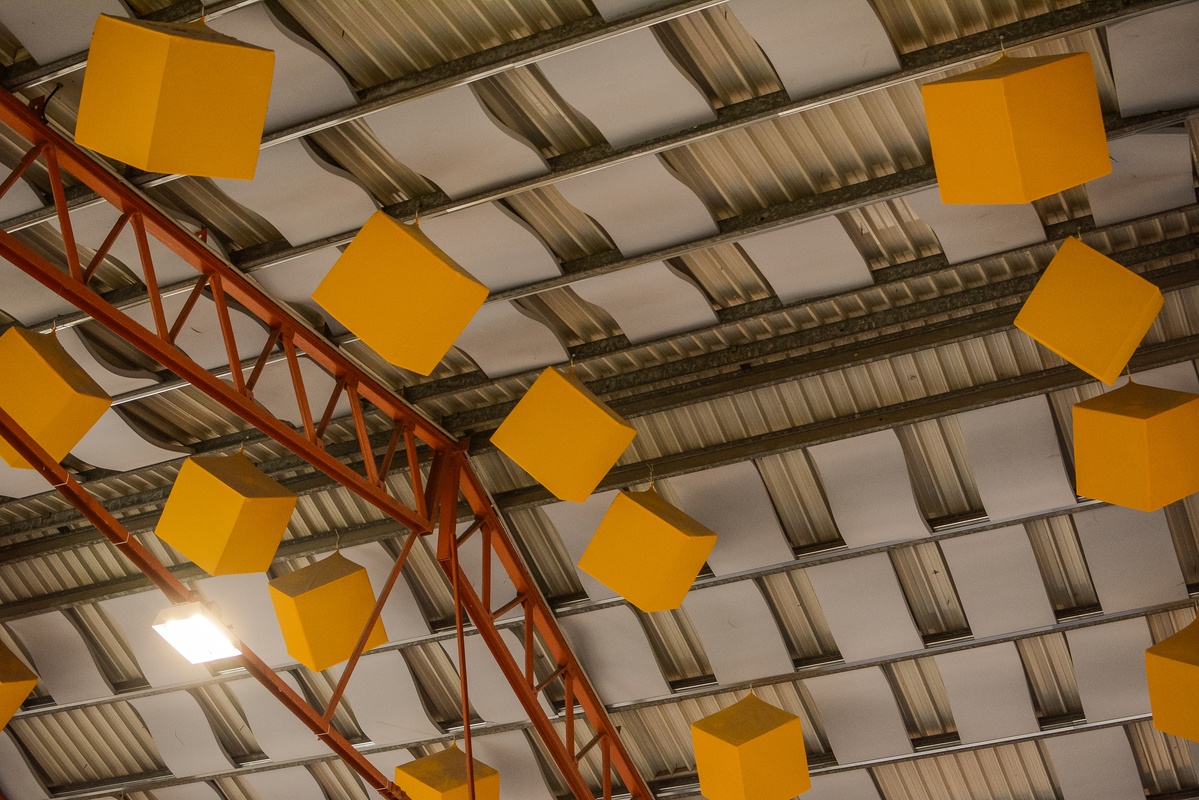How do you soundproof a ceiling? – Effective solutions for better acoustics
Installing sound absorbers on the ceiling is one of the most effective ways to improve room acoustics and reduce noise levels. The ceiling is often a large reflective surface where sound waves bounce and spread, which can create an unbalanced sound environment with long reverberation and high background noise. By soundproofing the ceiling, you can break up the spread of sound waves, reduce echoes, and create a more pleasant atmosphere. This is especially important in office environments, restaurants, conference rooms, schools, and other premises where sound comfort is crucial.
Sound absorbers in the ceiling work by capturing and dampening sound waves before they are reflected back into the room. Without sound-absorbing materials on the ceiling, noise levels can be high and conversations difficult to hear, especially in large or open environments. By installing sound-absorbing panels, ceiling-mounted baffles, or other acoustic solutions, you can create a more controlled sound environment and improve speech intelligibility, leading to a more productive and pleasant environment.
What is the best way to soundproof a ceiling?
The choice of sound absorbers and their placement is crucial to achieving the best possible sound absorption. The most effective method is to install a comprehensive sound-absorbing ceiling, where the entire ceiling surface is covered with acoustic panels or perforated ceiling tiles with a sound-absorbing core. This solution provides maximum sound absorption and is particularly effective in environments where reverberation and noise levels need to be minimized, such as offices, schools, and conference rooms.
If a full-coverage ceiling is not possible, for example due to aesthetic or technical limitations, suspended sound absorbers can be an excellent alternative. By placing ceiling absorbers on at least 20-30% of the ceiling area, you can achieve a significant improvement in acoustics. These absorbers can be mounted in brackets or wire systems, making them flexible and easy to adapt to the specific needs of the room.
Thickness and distance affect sound attenuation
The thickness of sound absorbers plays a major role in their effectiveness. The thicker the absorber, the better it dampens low-frequency sound and reduces reverberation time. In addition, hanging absorbers placed a short distance from the ceiling are often more effective than those mounted directly to the ceiling surface. This is because the air gap between the absorber and the ceiling improves sound absorption and increases the overall sound attenuation in the room.
Sound absorbers should be evenly distributed across the ceiling surface to create balanced acoustics. In rooms with high ceilings, suspended absorbers or acoustic baffles can capture sound before it is reflected back into the room, reducing both background noise and reverberation.
Advantages of sound-absorbing ceilings
By reducing reverberation and noise, sound-absorbing ceilings can significantly improve the sound environment. In office environments and conference rooms, this leads to better speech intelligibility and reduced sound fatigue, creating a more productive working environment. In home theater systems and sound studios, ceiling absorbers help create a cleaner and more balanced sound image. In public environments such as restaurants, schools, and open office landscapes, sound-absorbing ceilings contribute to a calmer and more pleasant atmosphere.
In addition to sound reduction, sound-absorbing ceilings can also contribute to better energy efficiency. By reducing reverberation and improving acoustics, the sound level in the room can be kept at a lower level, reducing the need to raise your voice or use loudspeaker systems at high volume. This can lead to lower energy consumption and a more sustainable sound environment.
Create a pleasant sound environment with the right sound absorbers
Whether you choose a comprehensive sound-absorbing ceiling or hanging absorbers, you can significantly reduce reverberation and noise with the right materials and strategic placement. To achieve the best possible effect, the solution should be tailored to the specific needs and sound problems of the room.
In open-plan offices, a combination of ceiling absorbers and wall-mounted sound absorbers can contribute to a more comfortable and productive working environment. In restaurants and schools, the right sound absorption can improve speech intelligibility and create a more pleasant environment for both staff and visitors. By choosing sound absorbers that are both aesthetically and functionally suitable, you can create a sound environment that is both comfortable and stylish.
Soundproofing the ceiling is one of the most effective ways to improve the acoustics in a room. By adapting the solution to the size and sound profile of the room, you can create a more harmonious and soundproof environment, whether it's a workplace, public space, or home environment.







